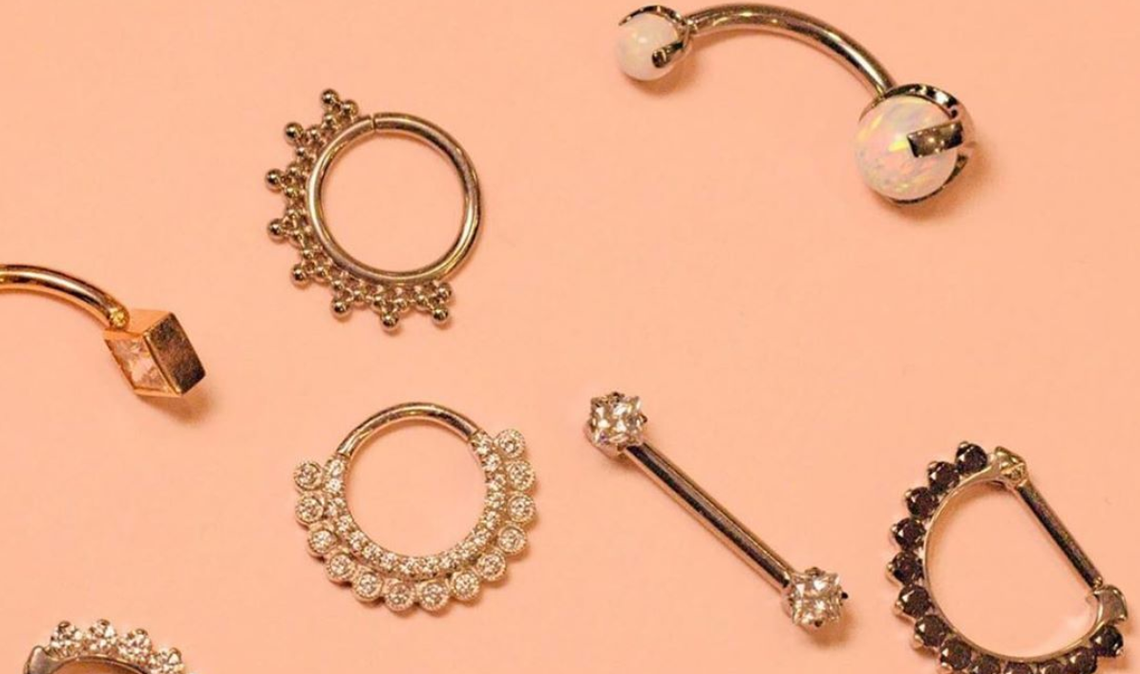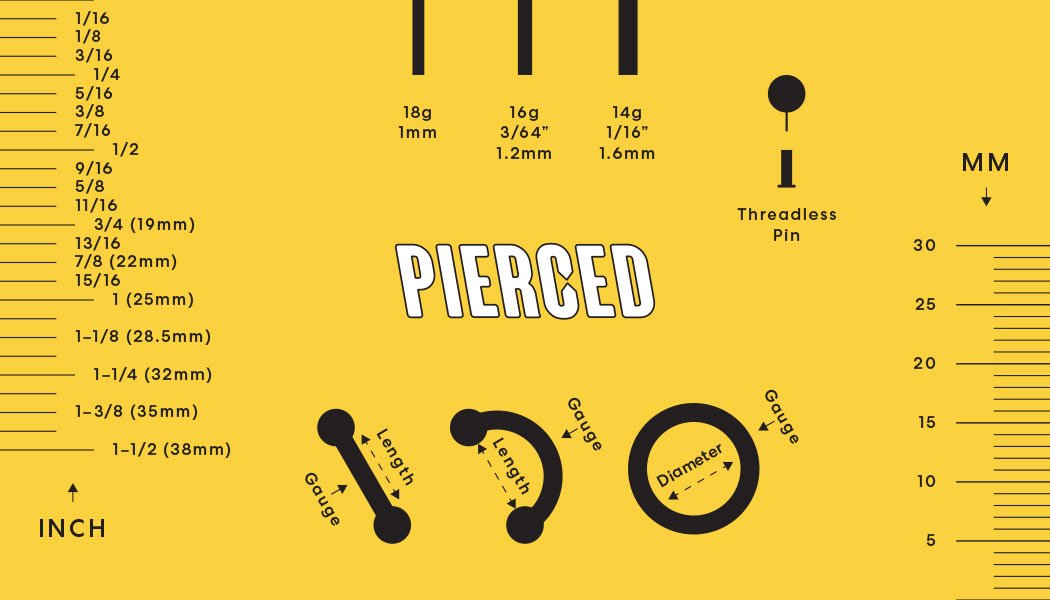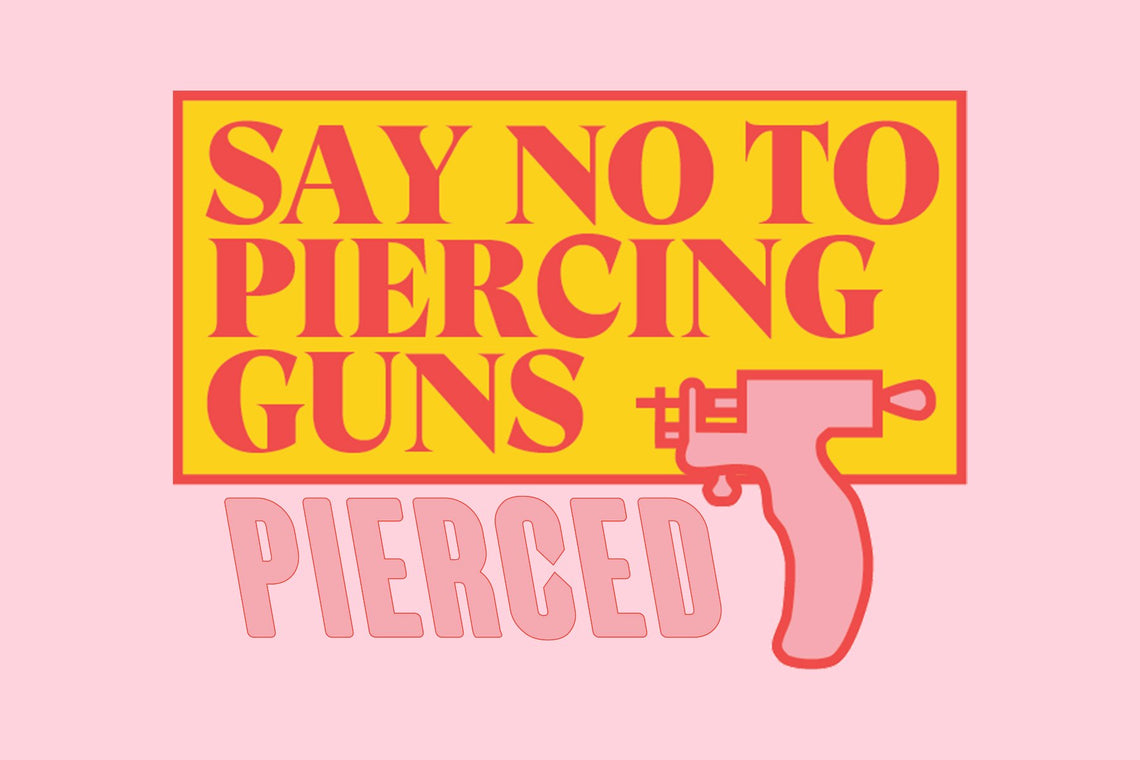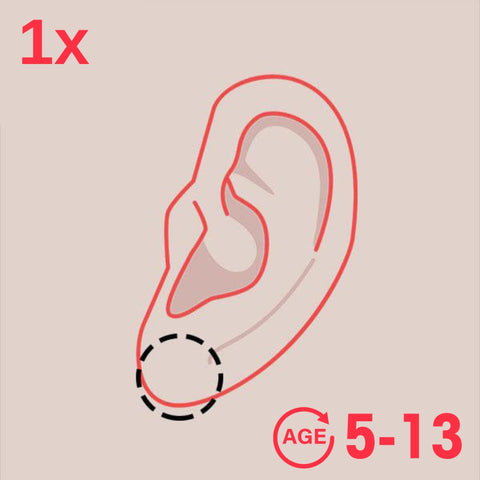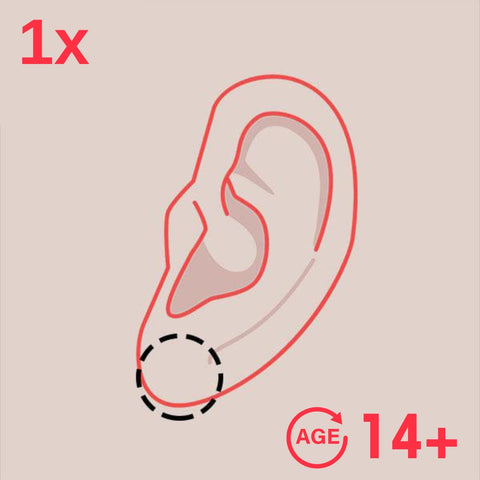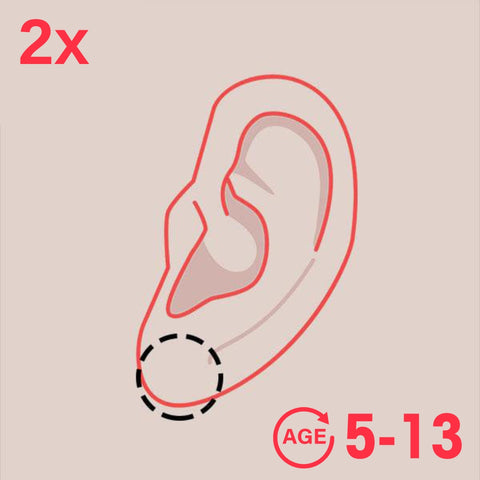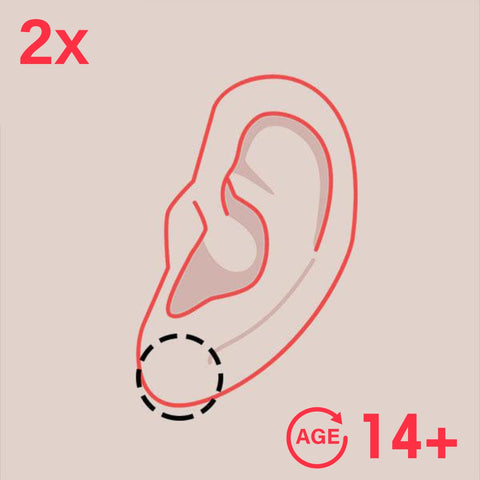Piercings can hurt. After all, you’re poking holes in your body. Fortunately, they’re over quick and, for most people, the pain is minor. You can also minimize pain based on location and preparation. If you want a piercing but are worried about pain, don’t worry, it’s nothing you can’t handle.
How Much Do Piercings Hurt?
For most people (and most piercings) piercings feel like a pinch. This is affected by pain tolerance and piercing location. Some common locations, like ear lobe piercings, are low pain because they’re fleshy. Areas with tougher cartilage are a little more painful, like a sting. Still, it’s over in seconds.
If you have a low pain tolerance, there isn’t much you can do to change that. But, you can choose a piercing location with lower pain. This is also a good idea for your first piercing since you won’t know what your pain tolerance is like yet.
Piercing Pain Scale
Piercing Pain Chart

What are the most painful piercings?
Here is our listing of body piercings from least to most painful:
- Ear Lobes
- Navel/Belly Button
- Lips
- Nose/nostril
- Septum
- Eyebrow
- Tongue
- Daith
- Helix
- Rook
- Conch
- Industrial
- Surface
- Nipple
- Genital
Ear Lobes
Ear lobe piercings are the least painful place to get pierced. It is a fleshy area that needles pierce easily. This is a common piercing, even among children. It’s a great spot for your first piercing.
Pain scale: 1/10
Navel/Belly Button Piercings
Navel piercings, also known as belly button piercings, are another fleshy area.
Pain scale: 1/10
Lip Piercings
The lips are a fleshy area as well. They offer a number of low pain piercing options like snake bites, labret, and medusa piercings.
Pain scale: 1/10
Nose/Nostril Piercings
This is the first cartilage piercing on the list. This is where the pain starts to increase. It’s still minimal, a slight sting for most.
The potential exception is septum piercings. The septum piercing can be low pain so long as your piercer finds the sweet spot where the cartilage isn’t as thick it’s a low pain piercing. That’s a good reason to get pierced by a professional.
Pain scale: 2/10
Eyebrow
Eyebrow piercings are mild pain, it is compared to a pressure sensation.
Pain Scale: 3/10
Tongue Piercings
These are the first type of piercings with notable pain. People commonly describe it as a 4/10 to 5/10 on the pain scale.
Cartilage Ear Piercings
Cartilage ear piercings offer more resistance than ear lobe piercings. As a result, they are more painful to pierce. The higher pain ear piercings include:
- Daith
- Helix
- Rook
- Conch
- Industrial
Pain scale: 5/10-6/10
Surface Piercings
Surface piercings, particularly anchors, take a little longer to perform. As a result, the pain is present longer.
Pain scale: 6/10
Nipple Piercings
The nipple is a more sensitive area. As a result, it can be more painful to pierce. The more sensitive they are, the higher the pain.
Pain scale: 7/10
Genital Piercings
The genitals are especially sensitive. They are generally the most painful area to pierce, and the can experience longer lingering pain.
Pain scale 7/10+
Our Favourite Piercing Aftercare
Do Piercings Hurt After?
The pain you feel during a piercing should only last a few seconds. For more sensitive areas like nipples or genitals, the pain may fade a little slower, but it should still only last a few moments. However, it’s not uncommon for piercings to be tender while healing.
The pain should fully fade within a week. Lingering pain beyond this is usually has a source. The immediate concern is usually an infection. Fortunately, infections are rare, most of the time it’s irritation during regular healing.
Redness, bumps, and soreness are usually caused by irritation. Try to avoid touching the piercing and make sure nothing is rubbing against it. Common culprits are hair, hats, or loose clothing pulling on, moving, or putting pressure on the piercing.
If you body piercings are showing signs of irritation you can treat it with a salt soak.
- 1 cup of warm water
- ¼ teaspoon non-iodized salt
You can use this mixture twice a day for 5 to 10 minutes.
How to Avoid Piercing Pain
You can’t really avoid piercing pain, but you can minimize it. The most effective way to reduce pain is by picking a low pain piercing location. Other useful techniques include:
- Go to a professional piercing artist
- Hand-holding
- Squeezing a ball
- Meditative or yogic breathing
Go to a Professional Piercing Artist
Your best bet is always with a professional. You don’t want to get a piercing from a part-time piercer with a gun. You want someone who has intimate knowledge, training, and a wealth of experience. They are able to consistently provide piercings in the proper location for safe, lower pain piercings.
Our Newmarket piercing shop employs full-time, trained and experienced piercers. We only have the best piercing artists to ensure the highest safety standards and piercing quality, every time.
Holding Hands to Reduce Piercing Pain
It’s pretty common for people who are nervous about piercings or needles to hold hands with someone they care about. While this is usually done for the purpose of comfort and assurance, it turns out this actually alleviates physical pain as well.
A recent study led by Dr. Goldstein of the University of Colorado’s Institute of Cognitive Science found that holding the hand of a loved one is an effective method of pain relief. So bring along your s/o, bff, or a family member for some hand-holding support.
Squeezing a Ball
Squeezing can offer temporary pain relief. In addition to providing a distraction, the exertion can alleviate pain while squeezing. Back in the time before anesthetics, people would bite down on hard leather strips during surgeries. Squeezing a ball offers the same principles, without damaging your teeth!
You can use just about anything for this technique, stress balls, tennis balls, even playdough.
Meditative or Yogic Breathing
Getting control of your breathing is the easiest and fastest way to be in control of yourself. This is especially useful if you are anxious about the piercing. Being calm can help to reduce the pain you feel during a piercing.
One easy and calming breathing technique is the 4-7-8 method:
- Exhale completely (all of your breath) through your mouth
- Inhale through your nose for a count of 4
- Hold your breath for a count of 7
- Exhale your breath for a count of 8
- Repeat while focusing on breath (at least four repetitions)
What About Numbing Sprays, Painkillers, and Alcohol?
It is usually best to avoid these. All three are more of a hindrance than a potential help. Numbing sprays aren’t proven to reduce pain, and they can risk frostbite. Painkillers thin the blood and can make the healing process slower. Alcohol also slows the healing process and often increases the painfulness of getting pierced.
Piercing Studios Near You
Mississauga
Square One Shopping Centre
100 City Centre Drive, Mississauga,
ON L5B 2C9
Phone
+1 (905) 232 -7226
Need an Experienced Piercer in Mississauga?
Working with an experienced piercer can make all the difference when it comes to your piercing experience. If you’re in the Mississauga, Ontario area and have any questions about ear piercing, body piercing or jewelry, give us a call or stop by our piercings studio today. We’d love to help walk you through what to expect and help you choose the right option.



